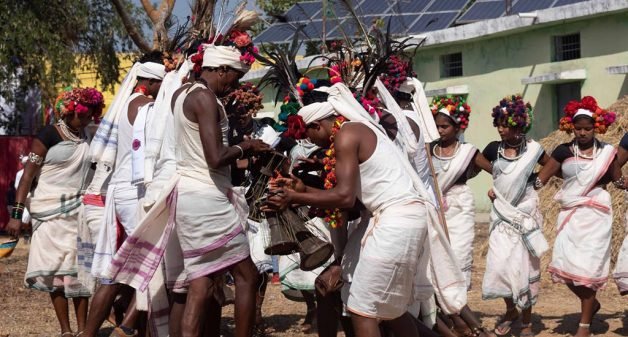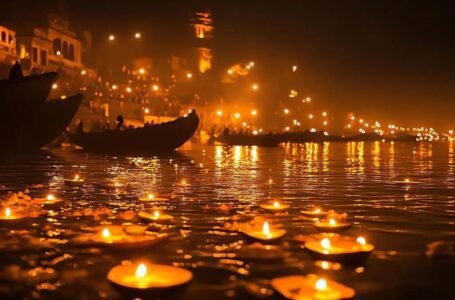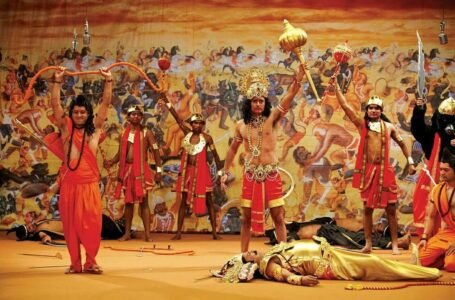Gond Tribal Music: A Sacred Sound on the Brink of Silence

Gond tribal music, deeply rooted in the traditions of the Gond community in Madhya Pradesh and Chhattisgarh, is an artistic expression that has been passed down through generations. This music serves as an integral part of their cultural and spiritual life, playing a significant role in rituals, storytelling, and communal gatherings. However, in the face of modernization and cultural assimilation, this rich musical tradition is gradually fading, threatening the identity of the Gond tribe and their unique art forms.
The origins of Gond tribal music can be traced back to ancient times when the Gonds, one of the largest tribal groups in India, used music as a means of communication with nature and their deities. The Gonds have a deep reverence for nature, and their music often reflects their connection with the land, rivers, forests, and animals. Traditional instruments such as the mandar, dhol, and nagara accompany their songs, creating a rhythmic and soulful melody that resonates with their way of life. These instruments, crafted from natural materials, produce a raw and organic sound that enhances the authenticity of their music.
One of the trailblazers of preserving Gond tribal music is Teejan Bai, a renowned Pandavani singer from Chhattisgarh. Although Pandavani is not exclusively a Gond tradition, it shares similarities with their storytelling style. Teejan Bai has contributed significantly to keeping the essence of tribal music alive by narrating tales from the Mahabharata in a dramatic and musical form. Her powerful voice and expressive singing have gained international recognition, showcasing the depth of India’s folk traditions. Her influence has inspired many young tribal artists to embrace their roots and continue the legacy of indigenous music.
Gond tribal music is particularly fascinating due to its storytelling aspect. The Gonds have a rich oral tradition, and their music often narrates folktales, myths, and historical events. These stories are passed down through songs, preserving their heritage and educating younger generations about their ancestors. The themes of their music range from heroism and valor to love, nature, and spiritual beliefs. One of the most interesting elements of Gond music is its use in ritualistic practices. Music is performed during festivals, weddings, and religious ceremonies to invoke blessings from their deities. The rhythmic beats and hypnotic chants create a trance-like atmosphere, allowing the community to connect with the divine.
The portrayal of Gond tribal music in films and literature is rare but significant. The movie “Newton” (2017), directed by Amit Masurkar, offers a glimpse into the tribal culture of Chhattisgarh, including its music and traditions. Although the film focuses on electoral democracy in a conflict-ridden tribal area, it subtly showcases the struggles of preserving indigenous traditions. The background music and folk songs in the movie highlight the earthy and rustic essence of tribal life. Similarly, the book “The Painted Forest” by Jyotsna Singh explores the artistic heritage of the Gond tribe, including their music, art, and folklore. This literary work sheds light on the unique cultural elements of the Gonds and their struggle to maintain their identity in a rapidly changing world.
Ritualistic practices among the Gonds often involve music as a medium to communicate with the spiritual realm. During religious ceremonies, shamans or priests perform songs to invoke deities and spirits. These musical rituals are believed to bring prosperity, ward off evil, and ensure a good harvest. The “Karma” dance festival, a prominent Gond celebration, features music as an essential component. During this festival, men and women form circles and dance to the beats of traditional instruments, expressing gratitude to nature for its blessings. The vibrant atmosphere created by the music and dance is a testimony to the deep-rooted traditions of the Gond community.
However, the rise of cultural assimilation has posed a significant threat to Gond tribal music. The increasing influence of mainstream media, urbanization, and changing lifestyles has led many young Gonds to abandon their traditional music in favor of popular and commercialized genres. Many tribal communities are migrating to cities in search of employment, causing a disconnect between them and their cultural heritage. The younger generation, influenced by modern music and digital platforms, often perceives their ancestral traditions as outdated. As a result, the number of practitioners of Gond tribal music is dwindling, and the traditional instruments are being replaced by electronic and contemporary music trends.
Gond tribal music, deeply rooted in the traditions of the Gond community in Madhya Pradesh and Chhattisgarh, is an artistic expression that has been passed down through generations. This music serves as an integral part of their cultural and spiritual life, playing a significant role in rituals, storytelling, and communal gatherings. However, in the face of modernization and cultural assimilation, this rich musical tradition is gradually fading, threatening the identity of the Gond tribe and their unique art forms.
Gond tribal songs are typically sung in a call-and-response style, with a lead singer initiating a verse and the chorus responding in harmony. These songs are often performed in groups, enhancing the communal spirit. The melodies are rhythmic and repetitive, creating a hypnotic effect that helps in storytelling and rituals. Some of the well-known Gond songs include “Karma Gane,” “Ladi Gane,” and “Phag Gane,” each associated with different seasons, festivals, and ceremonies.
The performers wear traditional Gond attire, which consists of bright, colorful garments adorned with intricate patterns. Men typically wear dhotis and turbans, while women dress in sarees with traditional jewelry. The attire is chosen to reflect the vibrancy of their culture and often features motifs inspired by nature and Gond art.
The primary motive behind singing Gond tribal songs is to preserve history, pass down cultural knowledge, and invoke divine blessings. These songs are an essential medium for educating younger generations about myths, legends, and ancestral stories. They also serve as a means of social cohesion, bringing the community together during festivals and important events.
Gond songs narrate stories by incorporating elements of folklore, mythology, and real-life events. They use metaphors and symbolic references to depict tales of heroism, love, and nature. For example, during the “Karma” festival, songs narrate the cycle of life and the importance of respecting nature. Similarly, “Phag Gane” songs, sung during the spring season, celebrate renewal and fertility.
Music plays a vital role in Gond rituals, particularly during religious ceremonies and festivals. During weddings, special songs are sung to bless the couple and ensure a prosperous future. In death rituals, mourning songs help the departed soul transition to the afterlife. The “Karma” dance festival is one of the most significant events where music is central, with men and women forming circles and performing synchronized steps to the rhythm of drums and folk instruments. These ritualistic performances are believed to bring good fortune and spiritual harmony.
Gond tribal music, deeply rooted in the cultural traditions of the Gond community in central India, is an enchanting blend of rhythm, storytelling, and spirituality. One of the most unique aspects of this music is its connection to nature—many Gond songs mimic the sounds of birds, flowing rivers, and rustling leaves, creating an organic harmony with the environment. Unlike mainstream folk music, Gond melodies are often performed during ritualistic ceremonies, particularly the Persa Pen (ancestral deity) worship, where rhythmic drumming and chants induce a trance-like state among participants. Another lesser-known fact is that Gond musicians use unconventional instruments, such as the Kikir, a bow-like string instrument, and Ghangli, a rustic violin, producing hauntingly beautiful sounds. The lyrical compositions, passed down orally through generations, often contain secret codes and metaphors understood only by the community, preserving their history in a way that outsiders cannot easily interpret. Some Gond tribes also believe that certain drumbeats have the power to summon rain or ward off evil spirits, blending mysticism with music. Despite its rich heritage, Gond tribal music remains largely undocumented, making it one of India’s most intriguing and underappreciated musical traditions that deserve global recognition.
Gond tribal music plays a significant role in uniting the cultural fabric of the Gond community, yet it also highlights their distinct identity, setting them apart from mainstream Indian culture. This music serves as a bridge connecting generations, as elders pass down songs that encode myths, history, and spiritual beliefs. The communal aspect of Gond music, performed during festivals like Keslapur Jatra and rituals dedicated to deities like Persa Pen, fosters a strong sense of unity and belonging among tribe members. The rhythmic beats of Dhol, Mandar, and Tumma drums bring people together, reinforcing collective traditions and strengthening their cultural identity.
However, Gond music has remained largely isolated from India’s dominant musical landscape. Unlike other folk traditions that have merged with classical or Bollywood music, Gond tribal music remains deeply rooted in its indigenous context, limiting its reach beyond tribal regions. This separation is partly due to language barriers and the secrecy of some sacred songs, which are not shared outside the community. While Gond music unites the tribe internally, its lack of integration with mainstream Indian culture highlights the challenges of cultural preservation versus assimilation. This unique duality makes Gond music both a unifying force within and a distinct marker of Gond heritage.
Efforts are being made to revive and preserve Gond tribal music through cultural initiatives, workshops, and festivals. Organizations and cultural activists are working towards documenting and promoting these indigenous art forms. Digital platforms have also played a role in bringing tribal music to a broader audience, encouraging collaborations between tribal musicians and contemporary artists. Schools and institutions in tribal regions are incorporating folk music into their curriculum to ensure that younger generations stay connected to their roots.
The loss of Gond tribal music would mean the erasure of a crucial aspect of India’s diverse cultural fabric. These traditional songs and rhythms carry centuries of wisdom, emotions, and history that cannot be replicated. Recognizing the importance of this music and supporting efforts to preserve it is essential for safeguarding the identity of the Gond community. By promoting awareness and appreciation of their musical heritage, we can ensure that the soulful melodies of Gond tribal music continue to echo through the forests of Madhya Pradesh and Chhattisgarh for generations to come.


